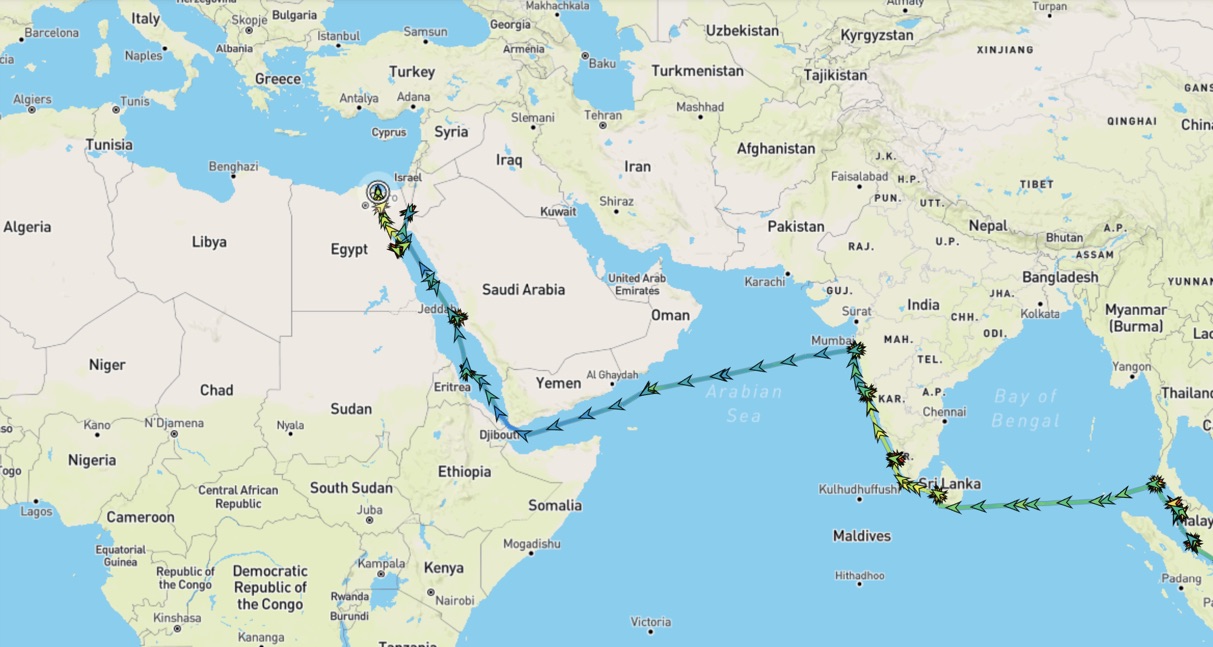
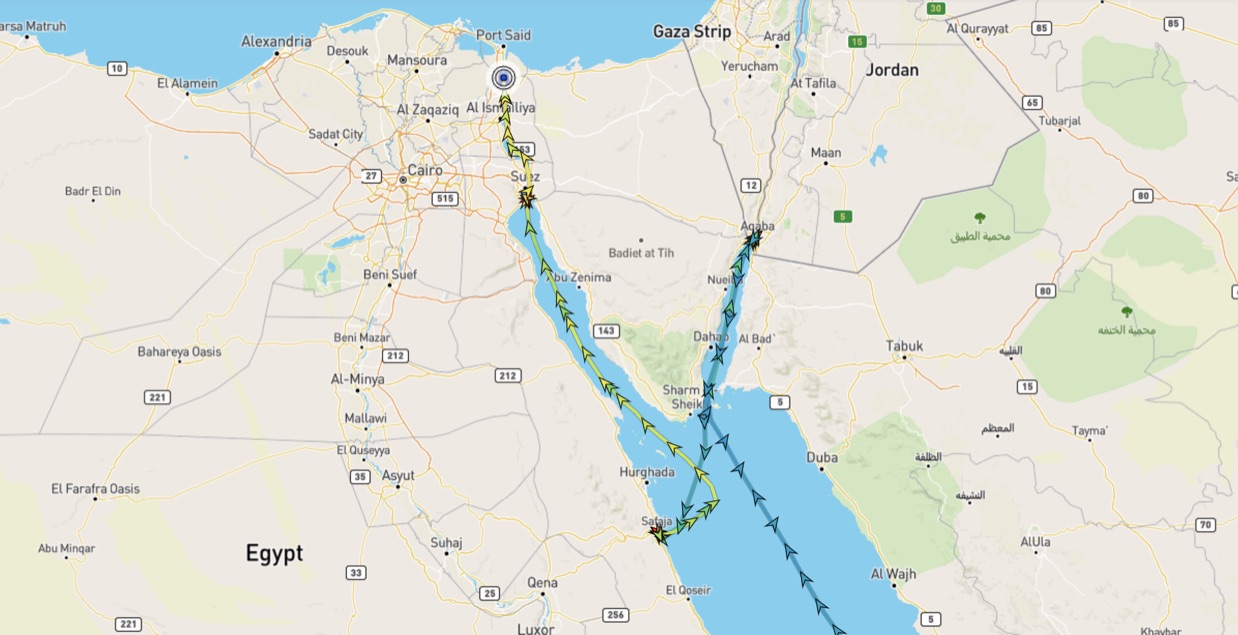
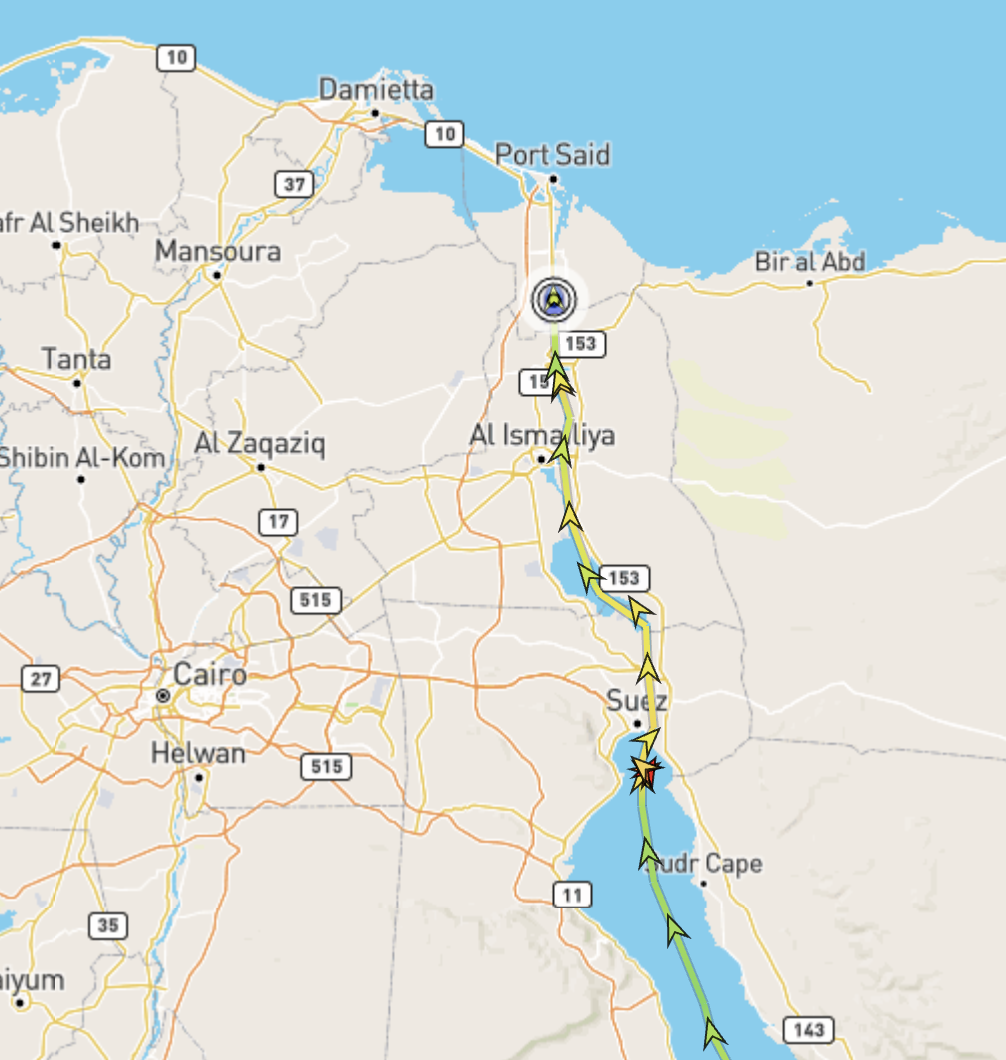
Noon Report:
- Location: N 30° 44.20′, E 032° 20.40′
- Speed: 10 knots
- Course: 340º
- Weather: Clear
- Temperature: 25º C; 77º F
- Wind: ENE 7 knots; 8 mph
- Sea: Calm
When we awoke this morning and drew back the curtains we found that we were already in the Canal.
We had arrived at the south-end staging area sometime yesterday evening and spent the night anchored, waiting for our assigned transit time – presumably sometime around 4:00 AM.
We followed our normal sea-day routine – up, exercise, breakfast. However this morning we lingered a bit after breakfast out on the Terrace enjoying the sunshine and the passing views. There is a layer of smog on the horizon – probably from all the hundreds of ships that go through the Canal daily.
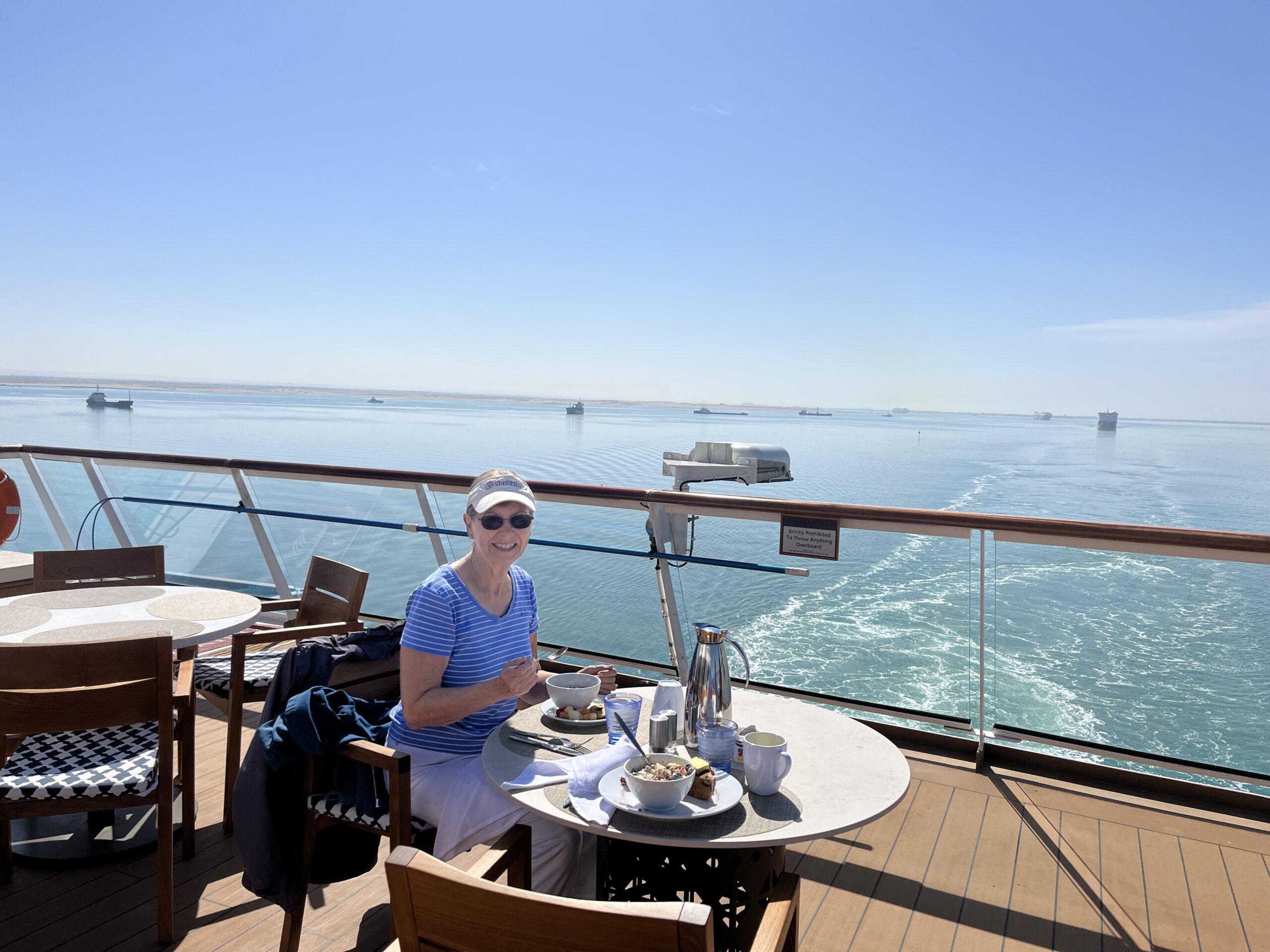
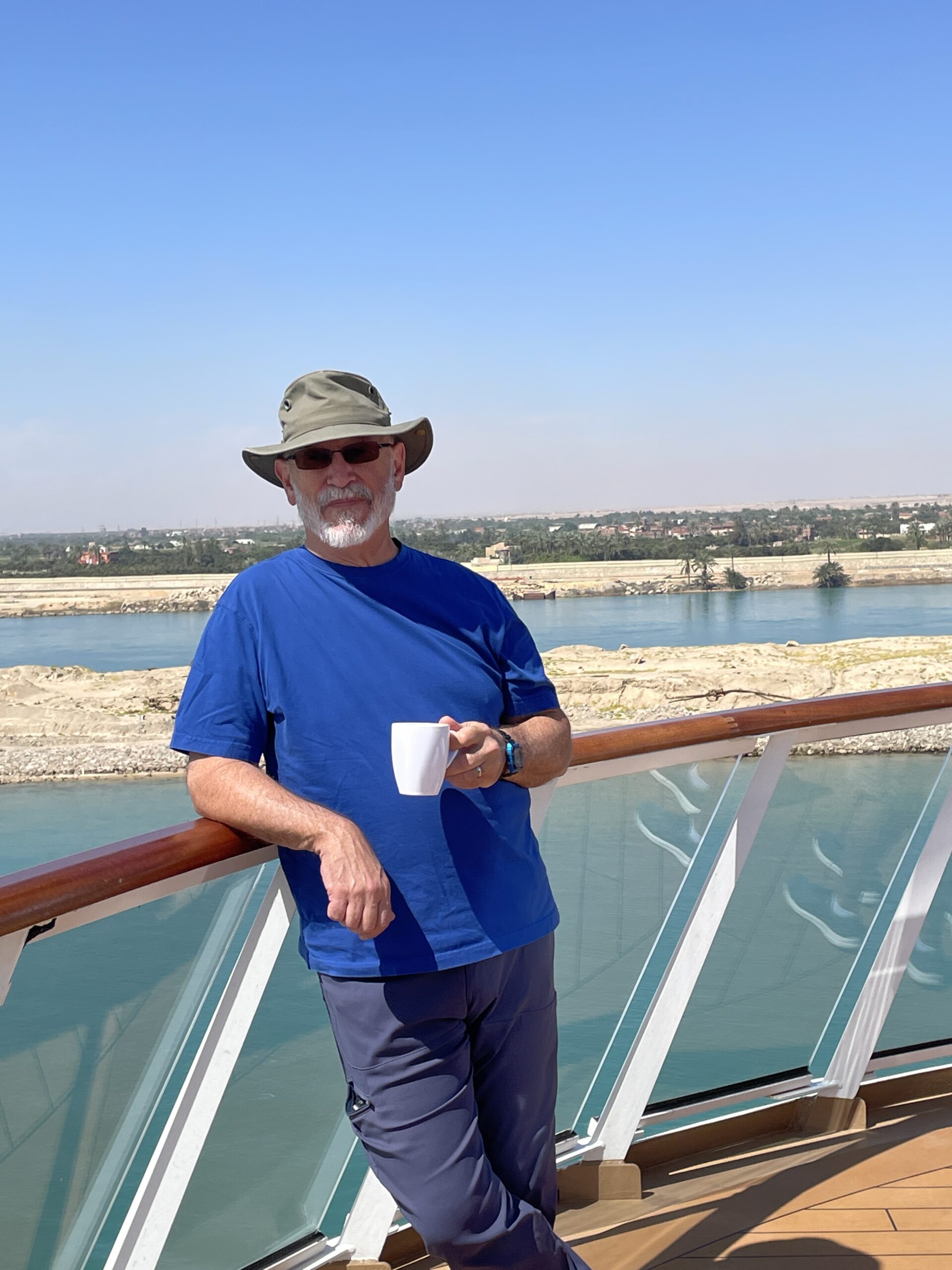

We had heard about the difference in landscape between the east side (Sinai Peninsula) and the west side (Nile Valley) of the canal. But it was stunning to actually see the difference first-hand.
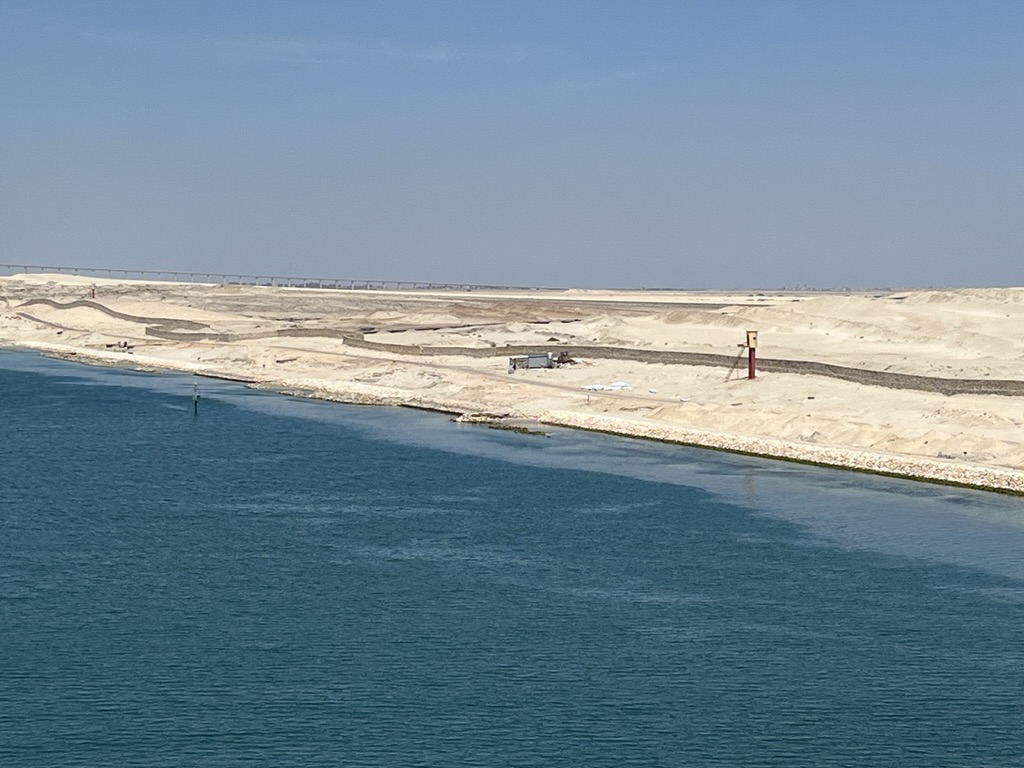
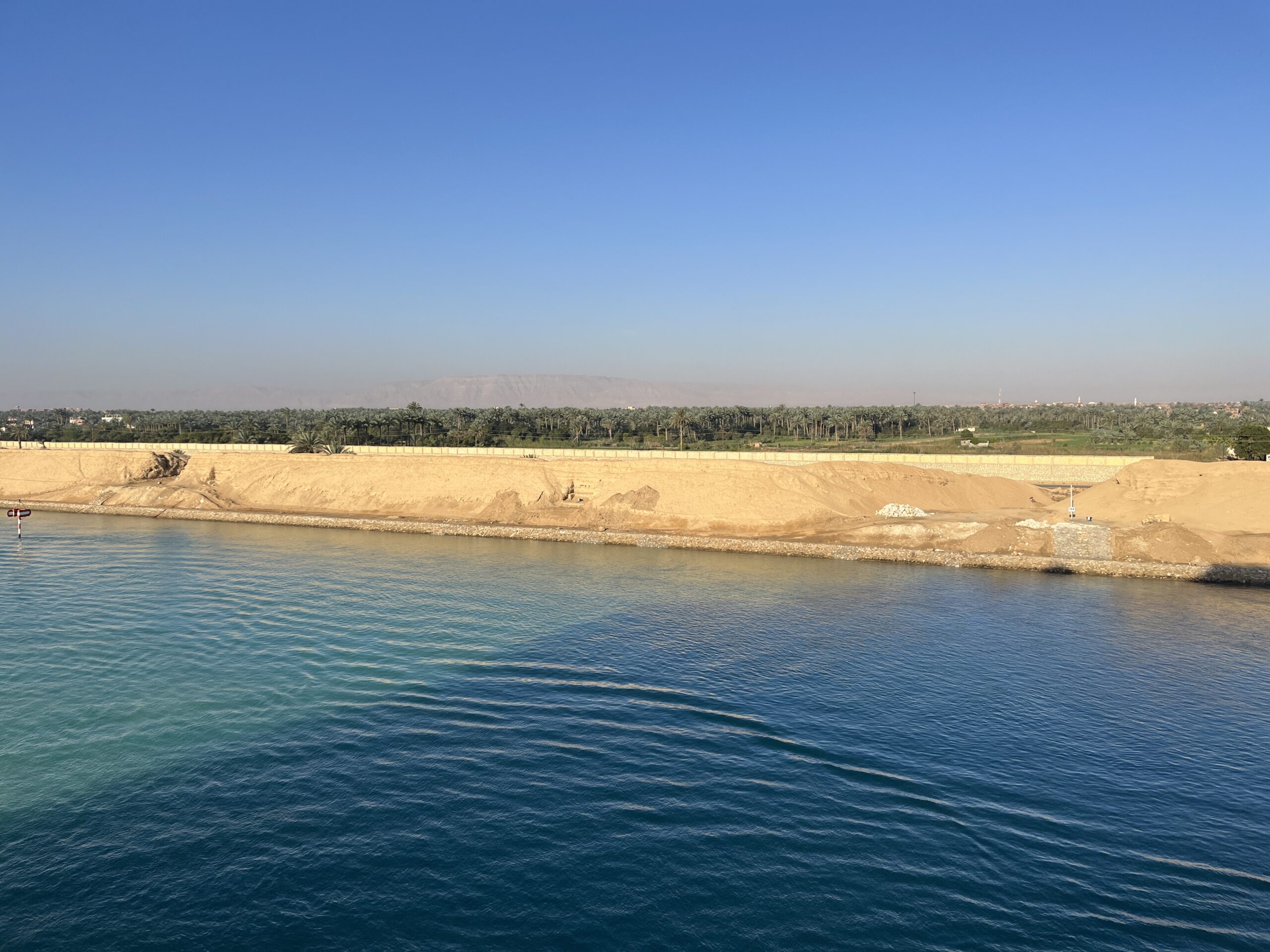
In the Sinai photo above note the gun tower (right of center). They were placed along the canal, on both sides, at occasional intervals in case of a future invasion.
We also noted many unassembled pontoon bridges stored at intervals and we waved to some soldiers at a military installation. They take defense of the canal very seriously.
The other ways across the Suez Canal are ferry (there are several) and the one bridge (named: Egyptian–Japanese Friendship Bridge, Al Salam Bridge, Al Salam Peace Bridge or Mubarak Peace Bridge – take your pick)
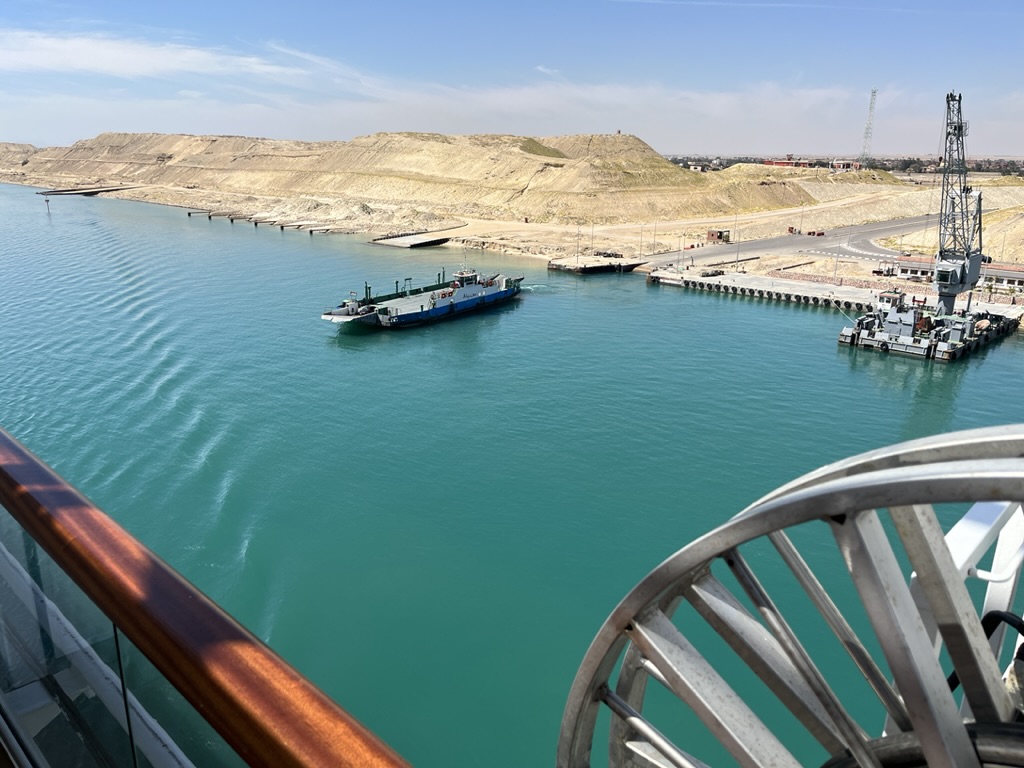
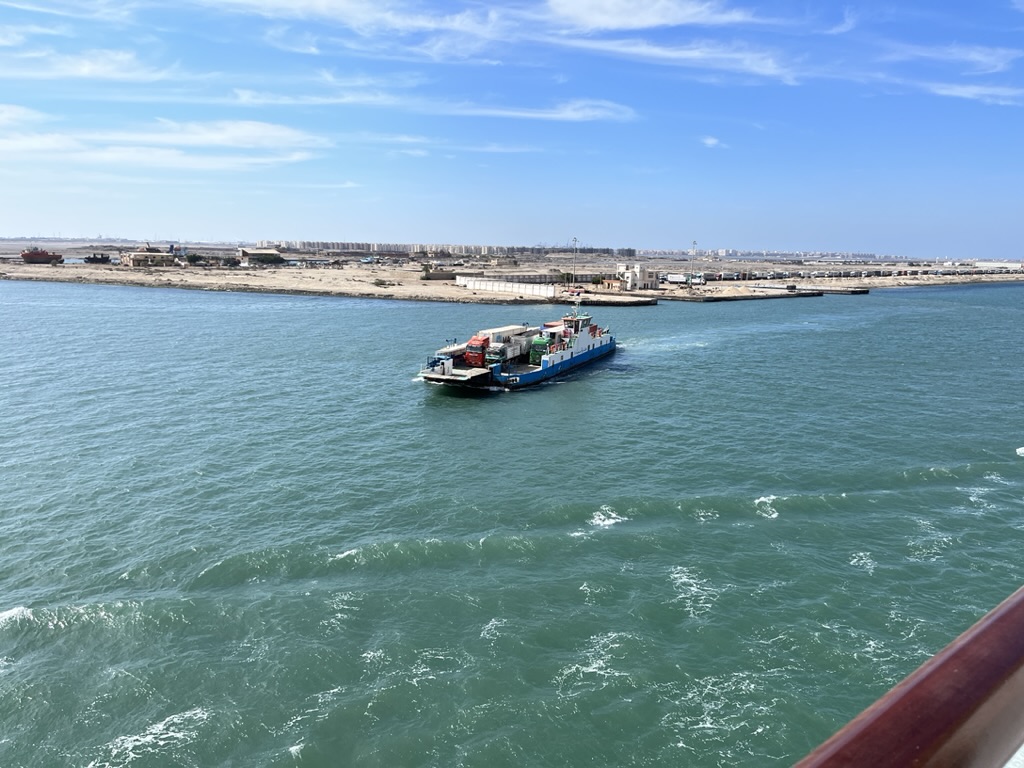
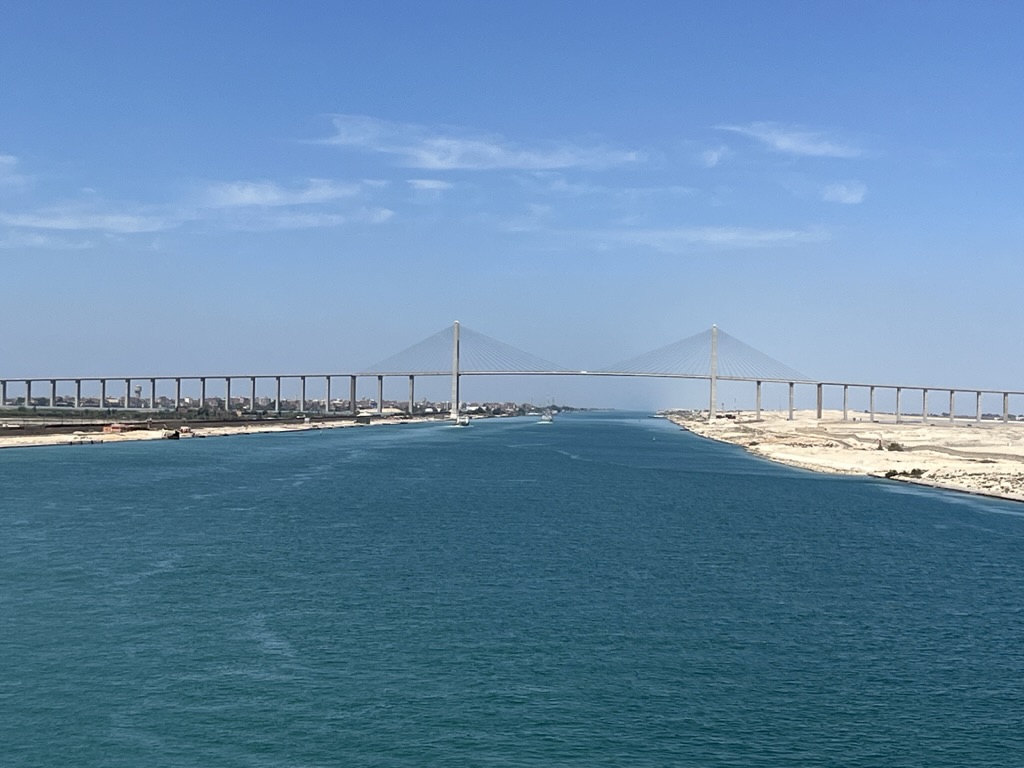
We approached the bridge just before noon, so the 12:15 trivia was delayed until we had crossed under the bridge. We love trivia but we have our priorities.
Generally the canal is a one-way operation. Close to its half-way point it crosses the Great Bitter Lake where ships can travel in both directions. So throughout its history it has been an effort in coordination to arrange for a convoy of ships heading north to meet a convoy of ships heading south in the GBL where they can pass each other.
However, they are working to add a separate lane to the canal so in some sections it is now possible for ships to travel in both directions at the same time – usually separated by an island in the middle.
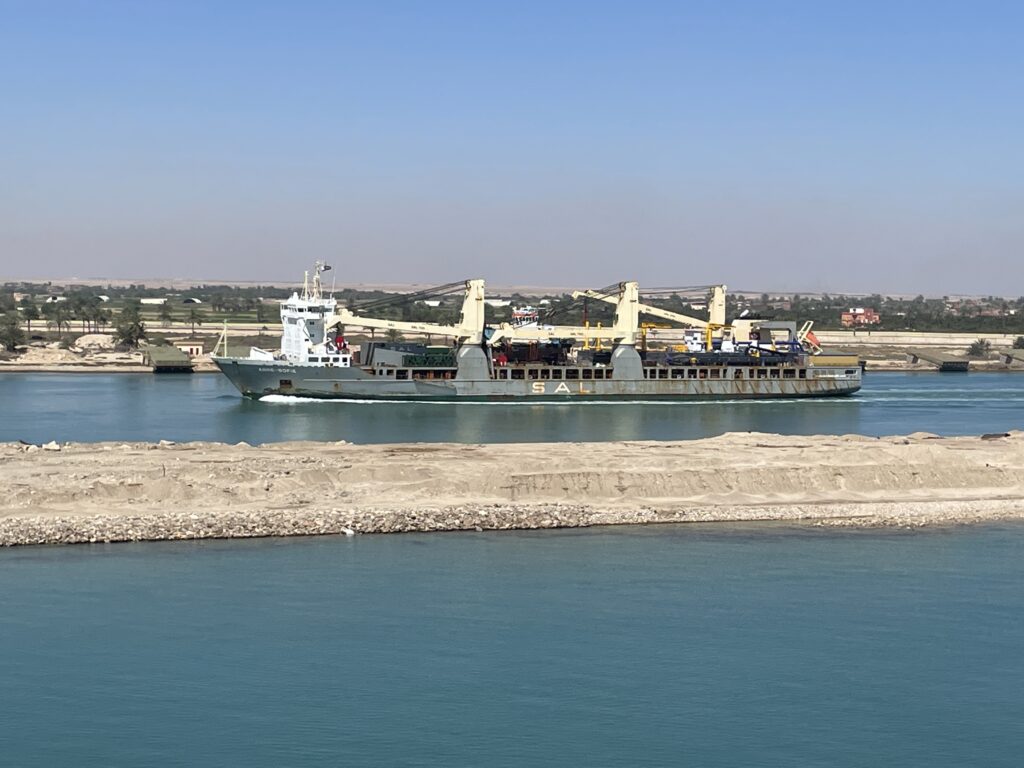
About convoys. While we were anchored overnight, other ships were anchoring in position behind us. At the appointed time we moved out as a convoy. Actually we were the second in line. We were following a Turkish naval ship. It was a training and intelligence gathering ship on its way home from exercises in the Indian Ocean and just happened to be in our convoy. Behind us was a large tanker ship.
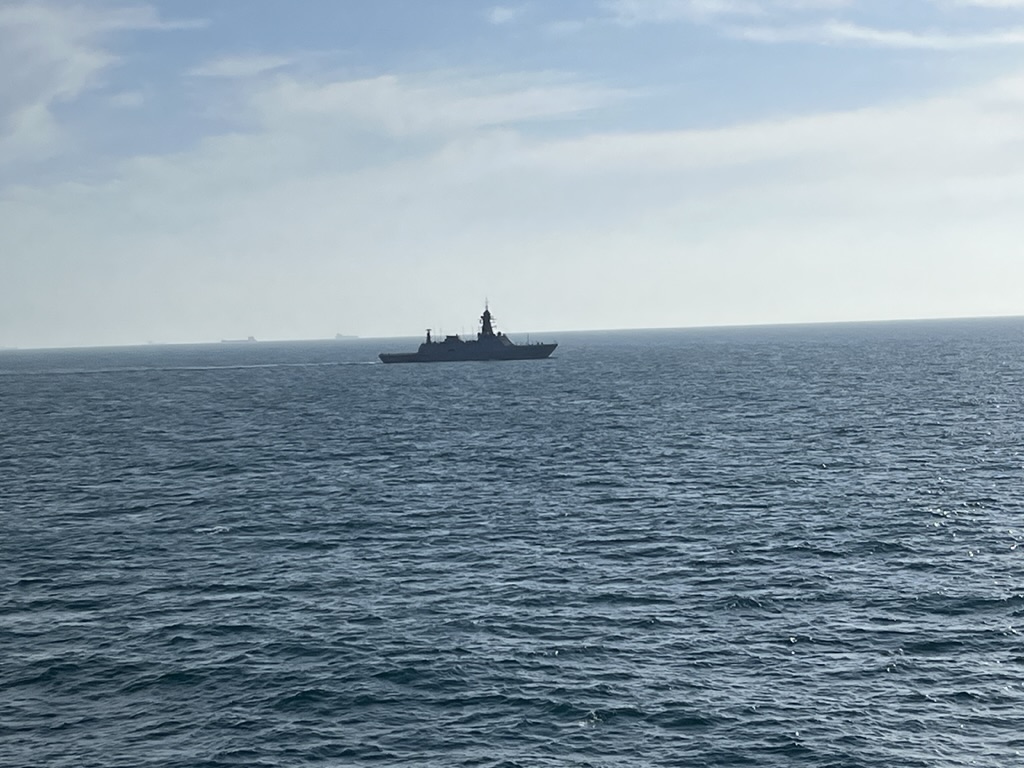
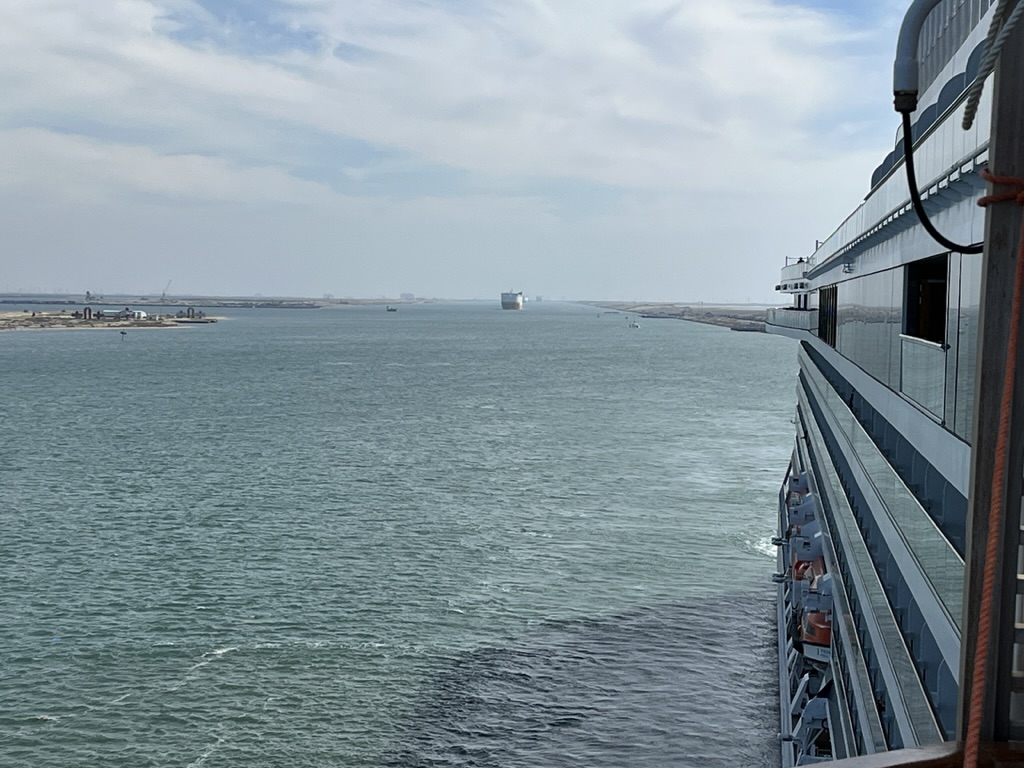
We also saw many small feluccas (fishing boats) along the way. Several times we blew our horn to suggest that they needed to get out of our way.
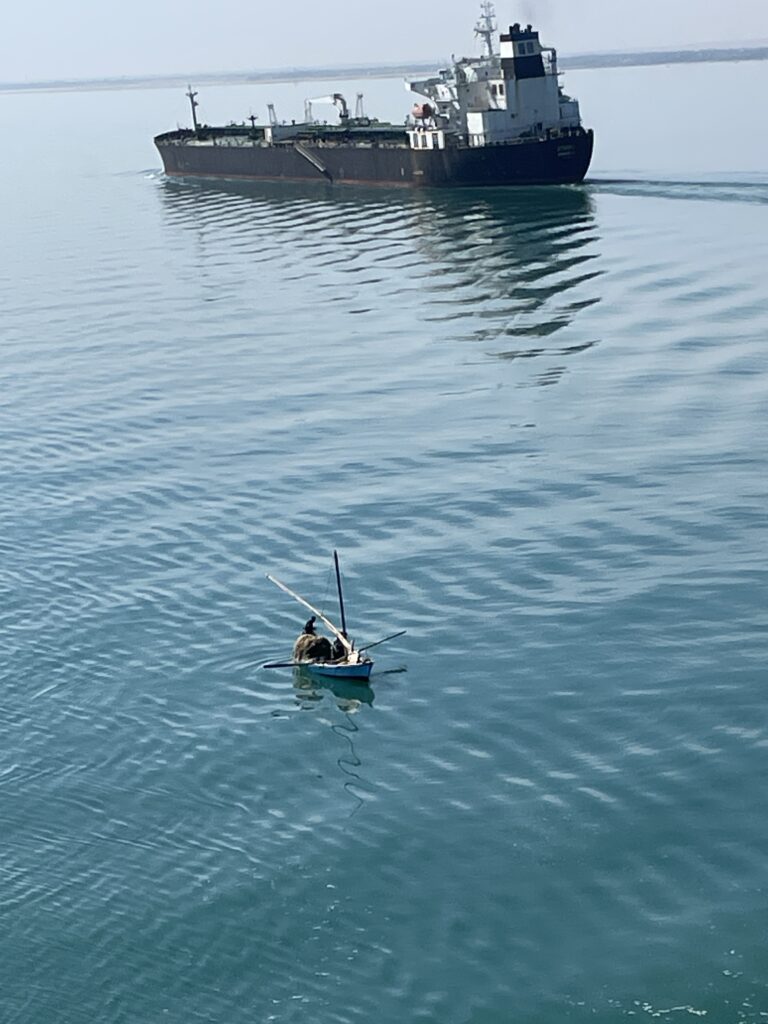
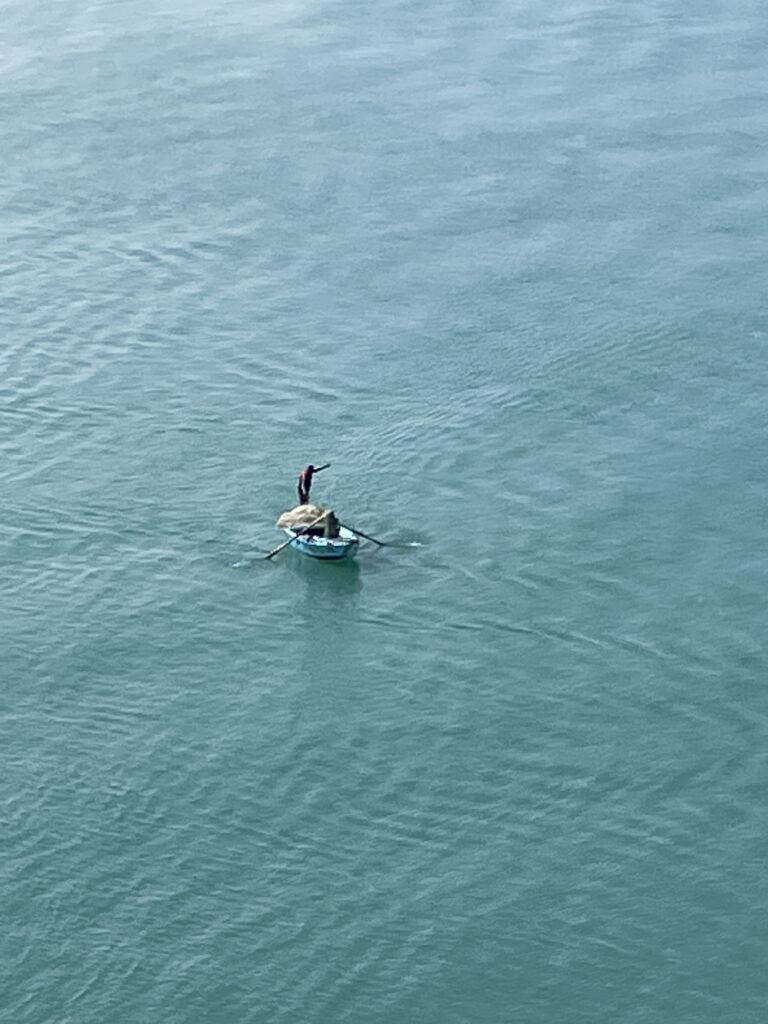
Then we need to talk about sand. Sand tends to blow into the canal. It’s a constant effort to keep the canal clear enough for ships to traverse it. At many places along the way we saw dredging operations.
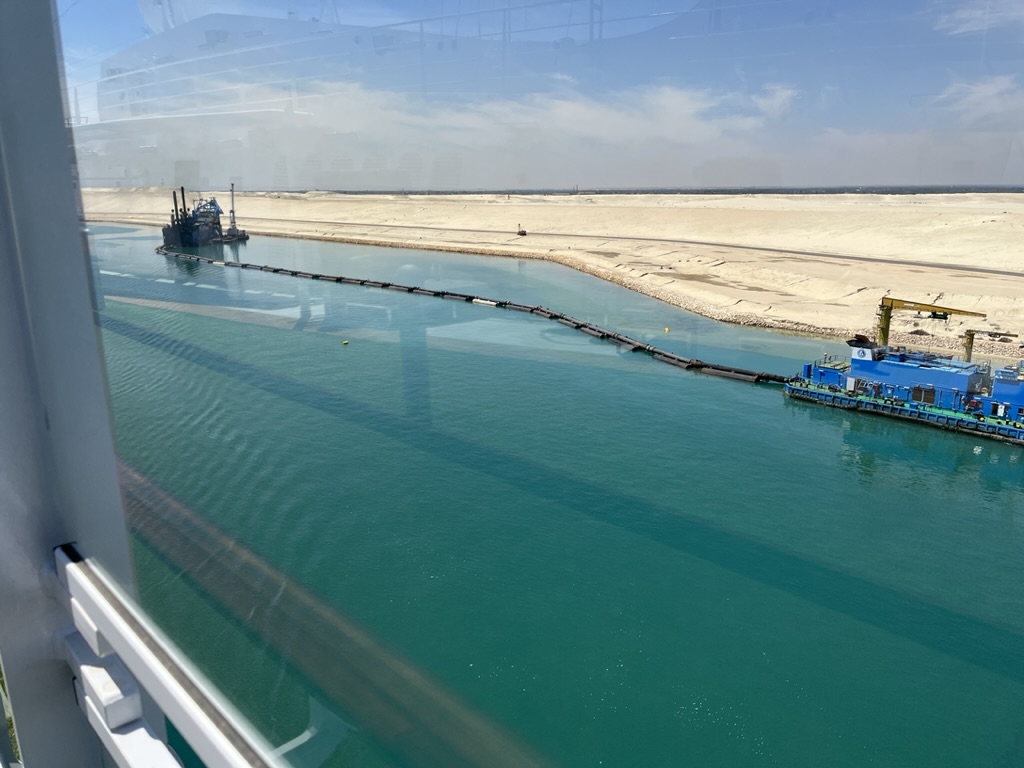
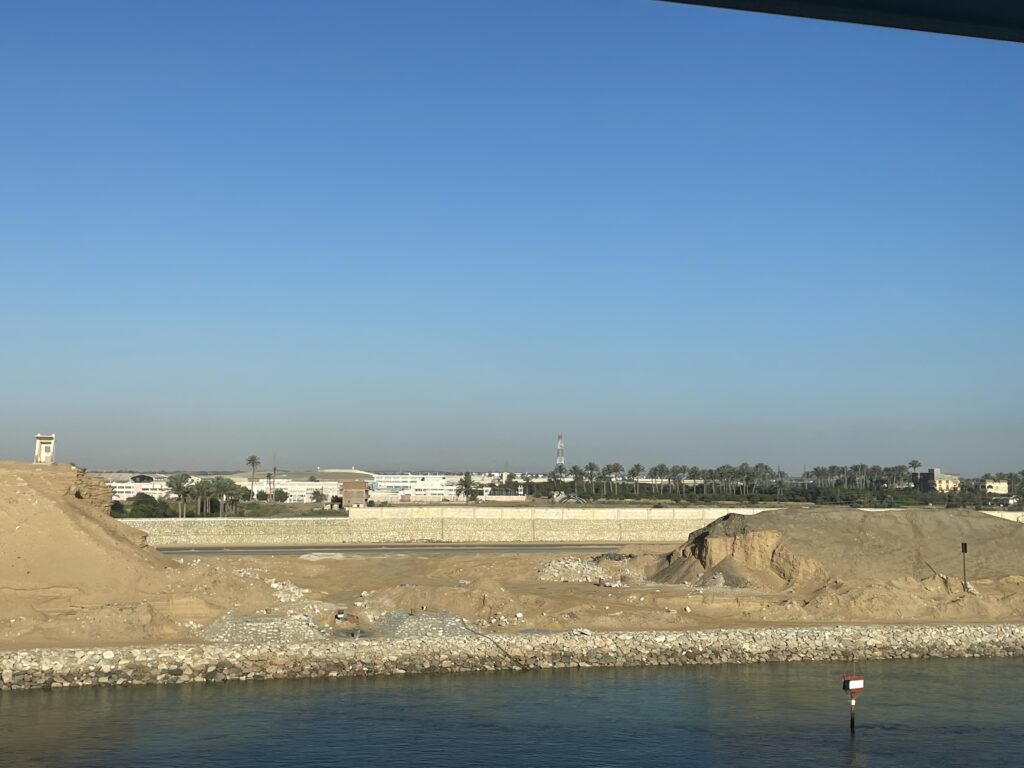
Eventually we came to the other end and entered the Mediterranean.
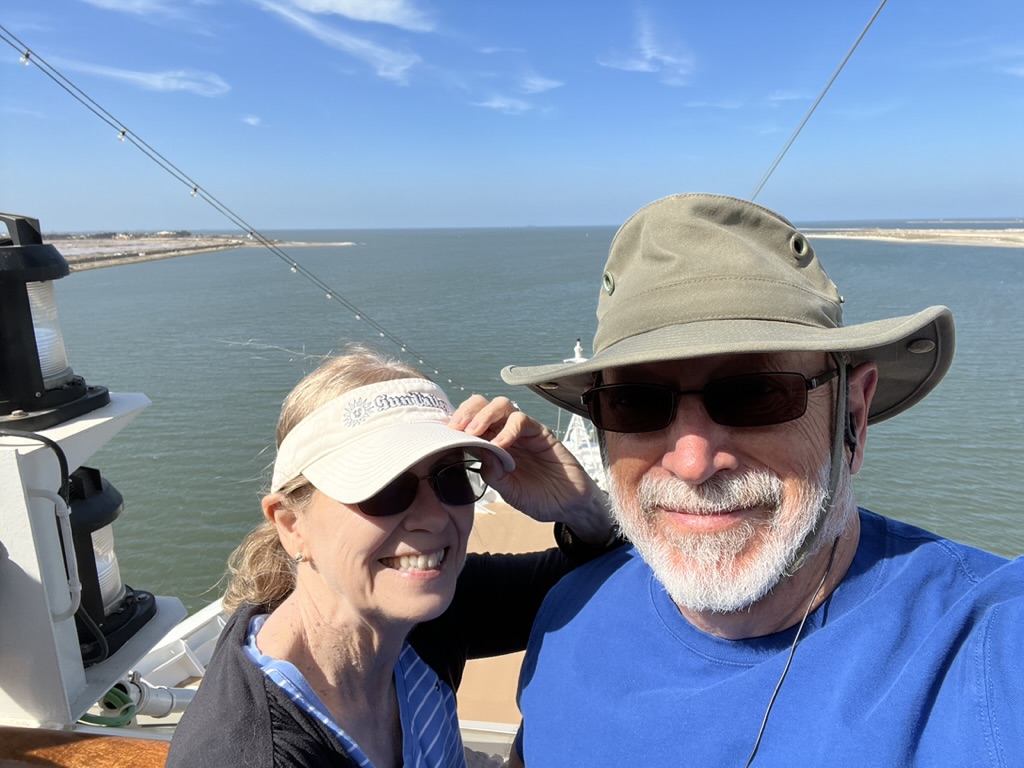
But it wasn’t all fun and “watch the scenery go by”. It was, after all, a sea day so, lectures:
11:00 am –“Quest for Immortality” provided some background for some of what we saw in the Valley of the Kings.
4:30 pm –“Napoleon in Egypt & the Holy Land: Stepping Stones to an Empire” – Much more about Napoleon than I learned in school.
5:30 pm – Called Renner Hunt to wish him a Happy 9th Birthday.
6:30 pm –“Onward to Mars” reviewed where we’ve been and where we’re headed in terms of visiting Mars and beyond.
8:00 pm – BBB 19/29 (A strong showing but not quite a winner)
So that’s the day.
Suez Canal, Check – we even got official certificates.
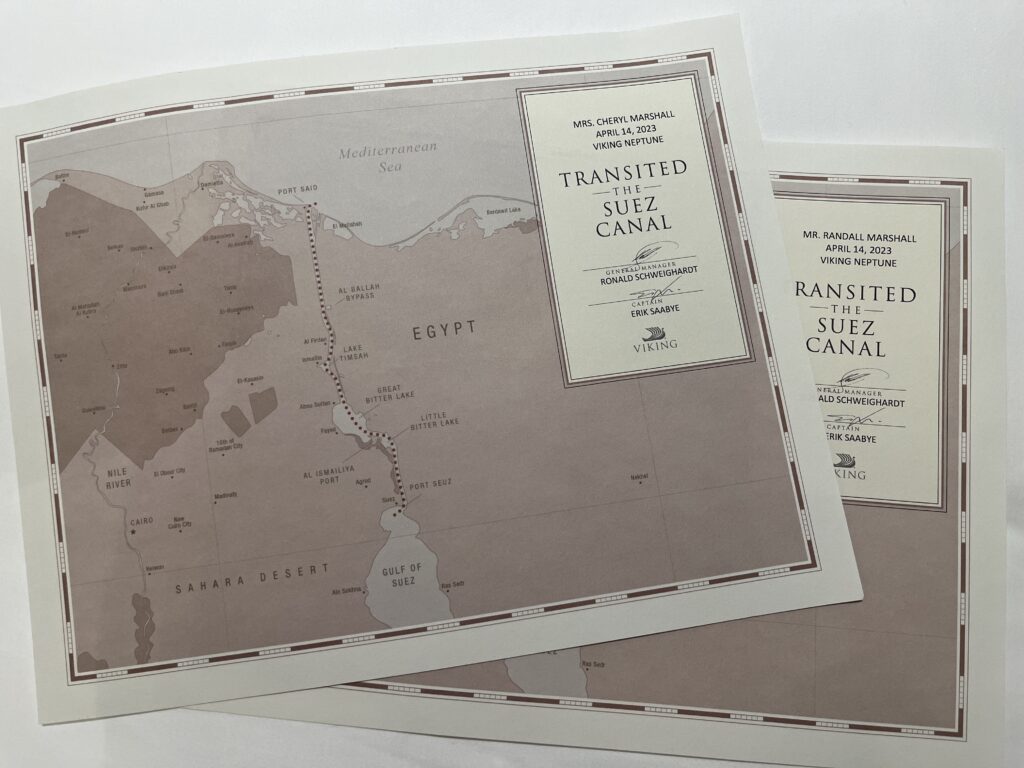
Now we sleep.
‘Cause tomorrow we’re in Israel!
Nite all,
R
Cheryl’s Factoids:
- SUEZ CANAL: On June 1, 1798 the French army landed in Egypt and from Alexandria Napoleon’s troops marched on to conquer the whole of Upper Egypt. While in Egypt, Napoleon had several surveyors study the feasibility of a Suez Canal but their calculations were faulty and reported that the water levels were too different to connect the Mediterranean and the Red Sea. Later the French made a deal with the Ottoman Viceroy of Egypt, “Pasha Sa id”, who agreed to building the Canal. The Suez Canal Authority was established selling shares in the company with 42% Egyptian money, 50% French investors, and the rest open to anyone. The British were against building a Canal rightly fearing this would ruin their domination over the East Indies spice trade. The SC Authority signed an agreement that the French would run the canal for 99 years then it would revert back to Egyptian ownership. This was a huge undertaking for Egypt which had to supply 4/5th of the labor, imported food and water, building materials, supply worker tools, and build a train along the increasing length to move in the supplies. Egypt went deeply into debt and had to sell 44% of their shares to the British (who had finally caught on that this would be a very profitable project). In 1869 the Suez Canal was finally opened but they had so many ship-grounding incidents that in 1876 improvements were made to further dig out the Canal. There are also “passing bays” every 6 miles so ships going the other way on this one-way canal could pass each other. In 1882 the Anglo-Egyptian war established British control over Egypt. In 1888 the Convention of Constantinople stated that it was the right of all ships to use the Canal during war or peace but this deal was reneged on many times, especially during World Wars I and II. Egyptian President Nassar nationalized the Suez Canal back into Egypt’s control 23 years earlier than was in the original agreement. In 1967 Egypt reneged and closed the Canal to the Israelis which led to the “Six Day War”. On March 23, 2021, the “Ever Given” cargo ship was stuck sideways in the canal with 450 ships stuck behind them (including 8 cruise ships) – this took 6 days to fix and resulted in world-wide delays in supplies. In 2014, the Expansion Bypass was started which allows ships to transit in BOTH directions at the same time.
- NAPOLEON IN EGYPT – STEPPING STONES TO EMPIRE? Napoleon joined the French army after the French Revolution and was a successful leader. The Directory of France wanted new territory in Egypt and India to offset the profitable colonies they had lost. At the time, Egypt was out of direct Ottoman control with dissension among the ruling Mamluks and Napoleon wanted to be as great a general as Alexander the Great. He assured the Directory that as soon as he had conquered Egypt, he would join the Indian princes together and attack the English possessions. He was successful in taking Alexandria and Cairo (found the Rosetta stone, found Sphinx half buried in the sand) but British Admiral Nelson’s fleet took out most of Napoleon’s navy at the Battle of the Nile. He taxed the Egyptians so Cairo revolted and had to be put down bloodily. The Ottomans in Constantinople heard of the French fleet’s destruction and believed this spelled the end for Bonaparte and his expedition, trapped in Egypt. However, the French learned of the hostile Ottoman movements and Bonaparte attacked them first in Syria, taking over Jaffa, capturing Haifa, then Tyre. The French advance was halted when they besieged the walled city of Acre which resisted over 2 months and his troop caught the plague. Bonaparte retreated to Cairo and returned to France where he became the 1st Counsel then Emperor for Life and turned his attentions to Europe.
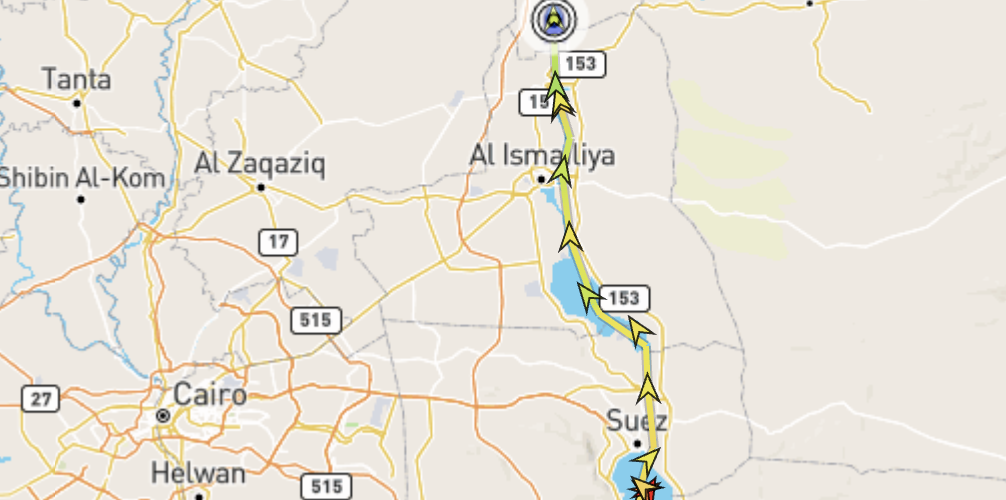
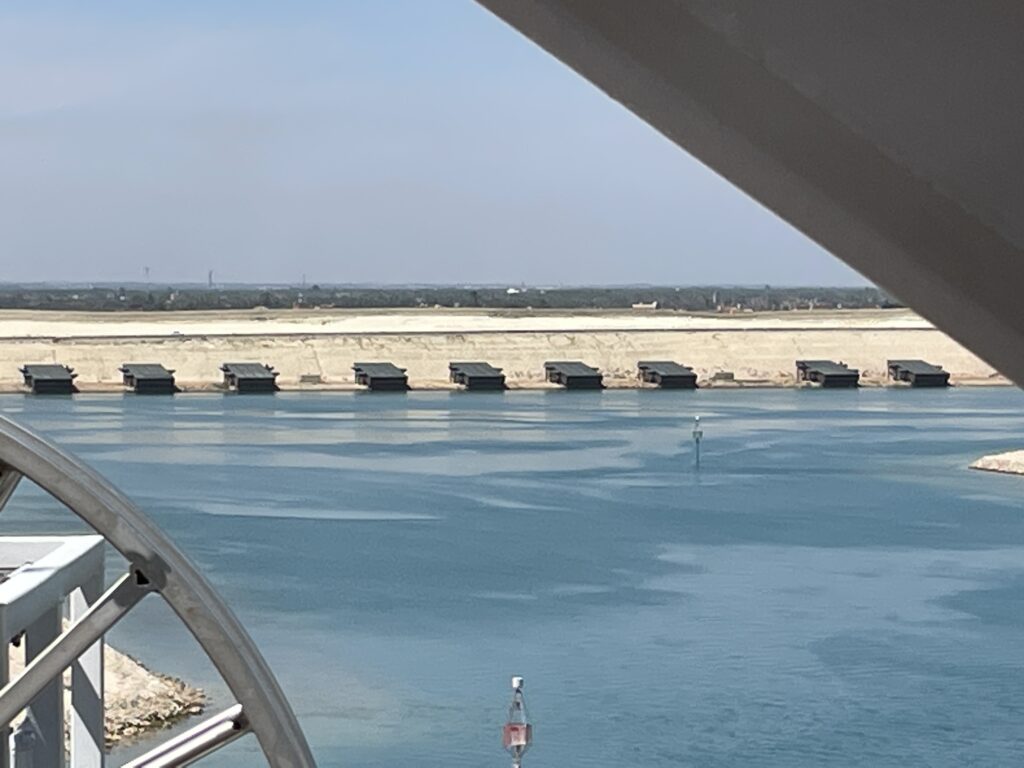
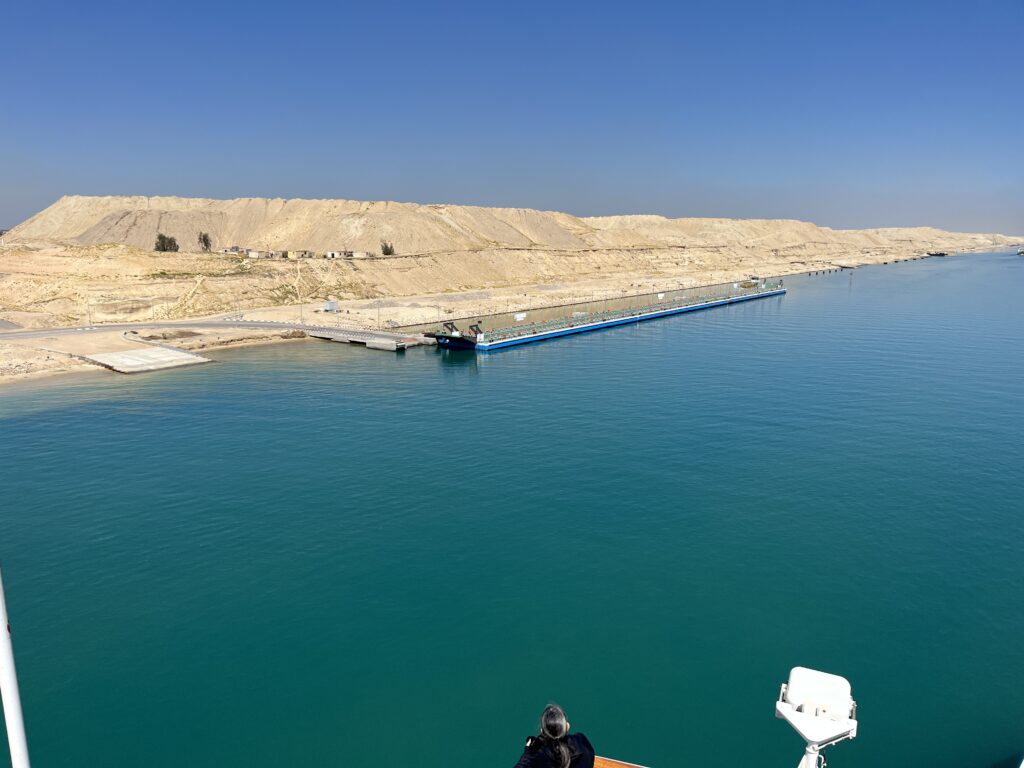
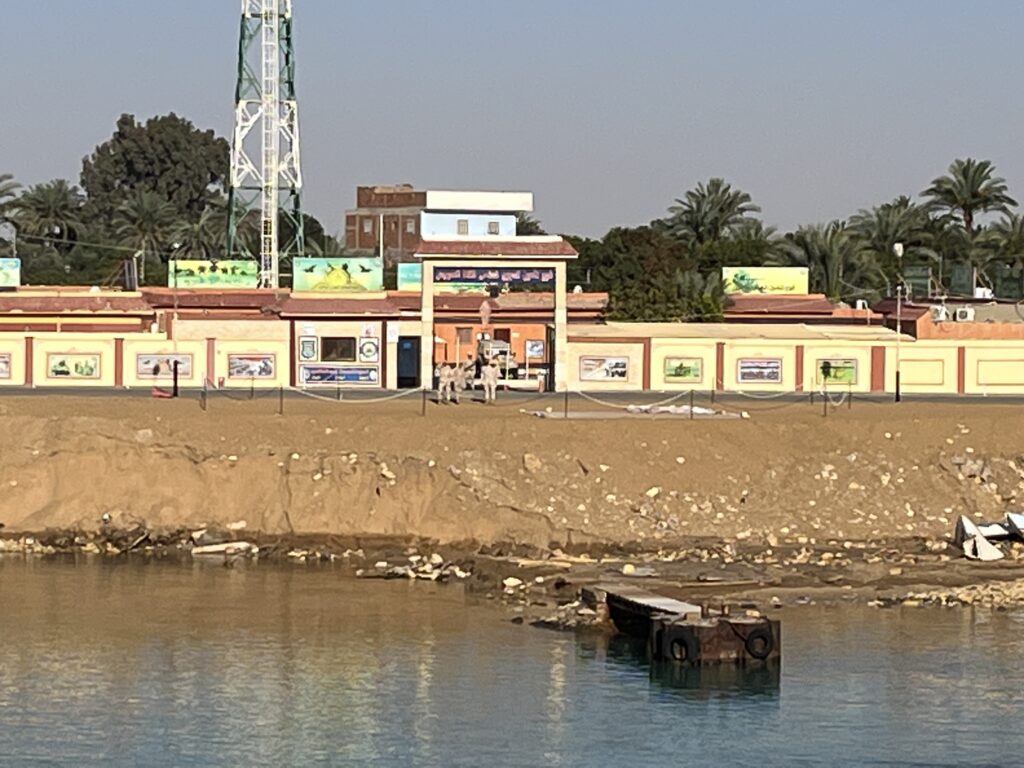
At first glance, I thought your 11:00 am lecture was “Quest for Immorality” and I thought, hmmmm….
You thought we were on the LUVVVVVVVVV boat?